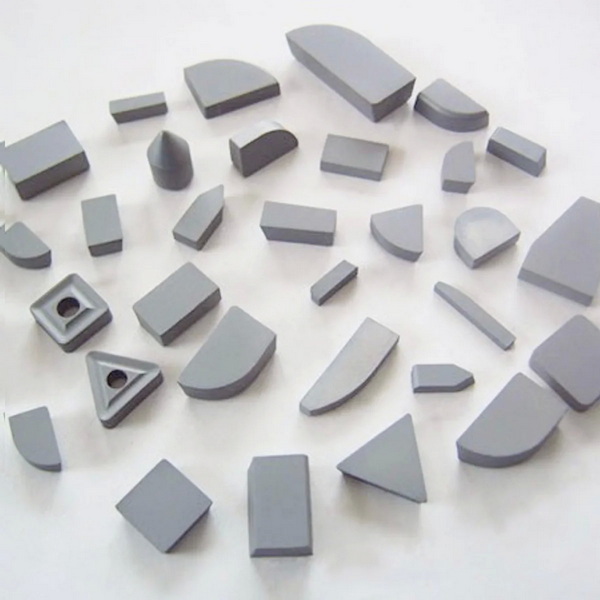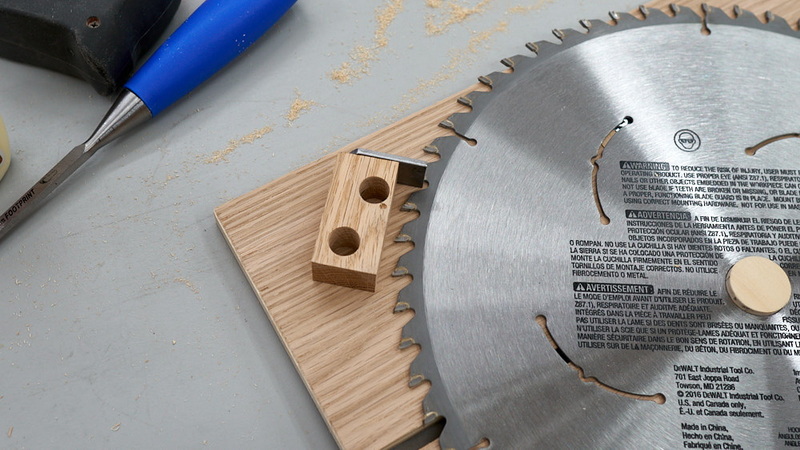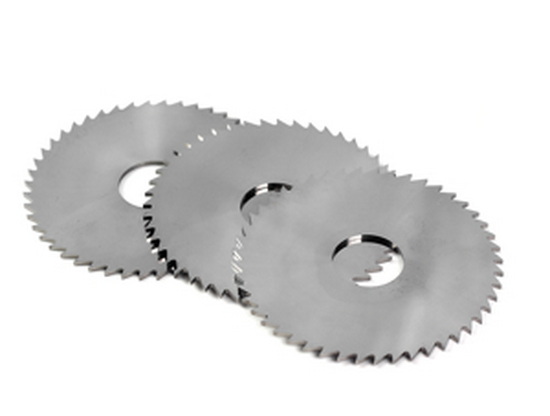Content Menu
● Introduction
● 1. What Are Carbide Saw Tips?
● 2. What Are High-Speed Steel Tips?
● 3. Composition and Manufacturing
>> Carbide Saw Tips
>> High-Speed Steel Tips
● 4. Hardness, Toughness, and Heat Resistance
>> Hardness
>> Toughness
>> Heat Resistance
● 5. Cutting Performance and Applications
● 6. Cost Considerations and Maintenance
● 7. Visual and Practical Comparison
● 8. Summary Table: Pros and Cons
● Conclusion
● FAQs
>> 1. What are the main differences between Carbide Saw Tips and High-Speed Steel Tips?
>> 2. Which type of tip is best for cutting hardwood or stainless steel?
>> 3. Why do carbide tips sometimes chip or break during use?
>> 4. How frequently should saw tips be sharpened?
>> 5. Are carbide tips more cost-effective over time despite higher purchase costs?
Introduction
Selecting the right saw tip is critical for achieving efficient, precise, and long-lasting cutting results—whether you're manufacturing, fabricating, or performing fine woodworking. Two of the most popular options are Carbide Saw Tips and High-Speed Steel Tips. Both have unique compositions, advantages, and trade-offs. This comprehensive guide dives deep into their construction, performance, and ideal applications, and provides an up-close look at what sets them apart.

1. What Are Carbide Saw Tips?
Carbide Saw Tips are cutting edges made from tungsten carbide, a composite material formed by combining tungsten with carbon and binding agents like cobalt. They're brazed onto saw blades, delivering long-lasting, sharp performance across demanding materials such as hardwoods, metals, and composites.
The exceptional hardness of carbide saw tips allows them to maintain sharpness far longer than many other materials. This results in excellent edge retention, which is invaluable in industrial processes where downtime for blade maintenance is costly. The wear resistance and tolerance to heat generated by high-speed cutting make carbide tips the choice for many high-volume or highly abrasive applications.
However, carbide is more brittle than many metals, requiring careful handling and mounting. Improper blade tension or vibration can cause chipping or even tip loss. Additionally, sharpening carbide tips demands specialized equipment, typically diamond grinding wheels, which can increase maintenance costs in less-equipped facilities.
2. What Are High-Speed Steel Tips?
High-Speed Steel Tips (HSS) consist of a steel alloy with tungsten, molybdenum, chromium, vanadium, and carbon, engineered to maintain hardness at elevated temperatures. HSS tips are popular for their toughness, relative affordability, and ease of sharpening with conventional grinding wheels.
Though they do not maintain edge sharpness as long as carbide, HSS tips resist impact damage better, making them suitable for interrupted cuts or materials that generate shocks during machining. They also generally cost less initially and can be resharpened easily and inexpensively.
Still, they wear faster than carbide, requiring more frequent maintenance and replacement. Their heat resistance is adequate for moderate speeds and materials but they fall short in demanding, continuous cutting operations—leading to a need for slower feed rates or more frequent tool changes.
3. Composition and Manufacturing
Carbide Saw Tips
Carbide tips are manufactured by sintering fine tungsten carbide particles with a cobalt binder under high pressure and temperature. This process produces an extraordinarily hard composite often rated 90 to 94 on the Rockwell C hardness scale. Carbide grain size can vary, impacting toughness and wear resistance: micrograin varieties provide a balance, while submicron and nanograin carbides offer more specialized performance, such as higher abrasion resistance or fracture toughness.
Additional elements such as titanium carbide and tantalum carbide can be incorporated to enhance specific properties like toughness and abrasion resistance. For ultimate cutting performance, some carbide saw tips are coated or even embedded with polycrystalline diamond (PCD), ideal for ultra-hard or abrasive materials, though these are specialized and expensive options.
Carbide tips are brazed onto steel saw blade bodies through a precisely controlled heating process, ensuring a strong metallurgical bond. The accuracy of this process affects tool longevity and cutting precision.
High-Speed Steel Tips
High-speed steel is produced through alloying iron with tungsten, molybdenum, and other elements, then heat-treating to achieve hardness around 62–64 HRC. Common grades like M2 offer reliable performance for a variety of applications, while M35 variants include cobalt for added heat and wear resistance. Powder metallurgy grades further improve wear properties but at a higher cost.
Unlike brazed carbide tips, high-speed steel tips are often integral to the blade or attached through cold pressing in thin edges on circular saw blades. Their manufacturing is generally simpler and less costly, though they may wear more quickly depending on application.
4. Hardness, Toughness, and Heat Resistance
Hardness
Carbide saw tips provide superior hardness compared to HSS, which contributes to their excellent edge retention and long tool life. This hardness allows carbide to cut through denser, abrasive materials with minimal wear on the cutting edge.
High-speed steel tips, while significantly harder than standard steel, cannot match carbide's hardness. Consequently, HSS blades dull faster and require more frequent sharpening when cutting tough materials.
Toughness
Toughness measures a material's resistance to fracture or chipping. Carbide, though extremely hard, is more brittle and less forgiving under impact or vibration. Choosing the right tip geometry and mounting conditions is essential to minimize chipping risks with carbide.
HSS possesses excellent toughness, allowing it to absorb shocks better and endure interrupted cuts or uneven feed conditions without disastrous failure. This characteristic makes HSS tips favorable for generalized workshop use and rough cutting operations.
Heat Resistance
Carbide saw tips outperform HSS in heat resistance, retaining hardness and structural integrity even at temperatures exceeding 1,100°C (2,012°F). This capacity makes carbide ideal for high-speed cutting, where high temperatures rapidly degrade less heat-resistant materials.
HSS retains strength to roughly 600°C (1,112°F); beyond this threshold, it loses hardness and rapidly wears out. This limits cutting speeds and working materials but makes it sufficient for many soft or moderate applications.
5. Cutting Performance and Applications
Carbide saw tips excel in high-speed, precision cutting environments involving hardwood, metals, composites, and abrasive materials. Their edge stays sharp over many cutting cycles, enabling consistent, clean cuts with minimal burr formation. For industrial manufacturing—such as automotive panel fabrication, aerospace composite machining, or solid hardwood furniture production—carbide is often the default choice.
On the other hand, HSS tips remain suitable for general-purpose cutting, particularly involving softer woods, plastics, and metals. They excel in interrupted cutting where toughness counters vibration and shock. DIY shops, educational settings, and small-scale fabricators often prefer HSS due to lower upfront costs and easier maintenance.
When selecting between these tips, consider material hardness, continuity of the cut, production volumes, and economic factors. For abrasive or dense materials, carbide tips reduce downtime and improve final part quality. For less demanding applications or where budget constraints loom, HSS can fulfill functional needs adequately.

6. Cost Considerations and Maintenance
Though more expensive initially, carbide saw tips reduce total costs over time because they require fewer replacements and minimize production interruptions related to tool changeovers. The necessity for diamond grinding wheels and professional sharpening also adds to maintenance costs but is justified at high volume.
High-speed steel blades offer a lower initial investment and simple sharpening with conventional equipment. However, they wear faster, forcing more frequent blade regrinds or swaps. Over longer periods, especially in abrasive environments, the cumulative cost and lost productivity may exceed savings in purchase price.
The choice between carbide and HSS must factor total cost of ownership, including acquisition, maintenance, downtime, and tool life.
7. Visual and Practical Comparison
Physically, carbide tips are usually darker gray with a glossy sheen, denser and heavier than HSS, which appears as a lighter, matte silver steel. Carbide's brittleness can manifest as sharp chips breaking off if mishandled, while HSS dulls gradually with use.
From a practical standpoint, carbide tips are a better investment for high-precision, high-speed production environments involving hard materials, while HSS tips suit rougher operations, variable tolerance cutting, and purposely interrupted or shock-inducing cuts.
8. Summary Table: Pros and Cons
| Feature | Carbide Saw Tips | High-Speed Steel Tips |
| Hardness | Extremely high | High |
| Toughness | Moderate (brittle) | Excellent (impact-resistant) |
| Wear Resistance | Outstanding | Good, but wears faster |
| Cutting Speed | Fast, optimal for mass production | Moderate, best for softer materials |
| Heat Resistance | Excellent, even above 1100°C | Good, up to ~600°C |
| Sharpening | Requires diamond wheel | Standard shop grinder |
| Maintenance | Low (long intervals) | Frequent (dulls faster) |
| Application Versatility | Very high (hard/abrasive jobs) | Moderate (softer/interrupted cuts) |
| Cost | Higher upfront, lower long-term | Low upfront, higher maintenance |
Conclusion
Choosing between Carbide Saw Tips and High-Speed Steel Tips rests on weighing your specific cutting requirements against cost, durability, and expected production conditions. Carbide saw tips deliver unmatched durability, wear resistance, and cutting speed—ideal for heavy-duty, hard, or abrasive materials in mass production. High-speed steel tips offer a competitive edge in toughness, ease of maintenance, and lower initial cost, making them ideal for softer or interrupted cuts.
Understanding the strengths and trade-offs allows manufacturers, brand owners, and wholesalers to select the optimal saw tip type to maximize efficiency, product quality, and profitability. By aligning tool choice with application demands, you ensure your cutting tools deliver superior value throughout their lifecycle.

FAQs
1. What are the main differences between Carbide Saw Tips and High-Speed Steel Tips?
Carbide saw tips are much harder and wear-resistant, providing longer tool life and higher cutting speeds but are more brittle and expensive. High-speed steel tips are tougher, easier to sharpen, and cheaper initially but wear more quickly.
2. Which type of tip is best for cutting hardwood or stainless steel?
Carbide saw tips are preferable for hardwood, stainless steel, and other tough or abrasive materials because of their superior hardness and heat resistance.
3. Why do carbide tips sometimes chip or break during use?
Carbide's brittleness makes it vulnerable to chipping if there is excessive vibration, incorrect blade tension, or if the material being cut causes impact loading outside of normal operation.
4. How frequently should saw tips be sharpened?
Carbide saw tips generally need sharpening after 10 to 20 times the cutting duration of HSS tips. HSS tips require more frequent sharpening but can be done with standard grinding equipment.
5. Are carbide tips more cost-effective over time despite higher purchase costs?
Yes, carbide tips often prove more cost-effective in high-volume or abrasive material applications by reducing downtime and replacement frequency, outweighing their higher initial price.
















